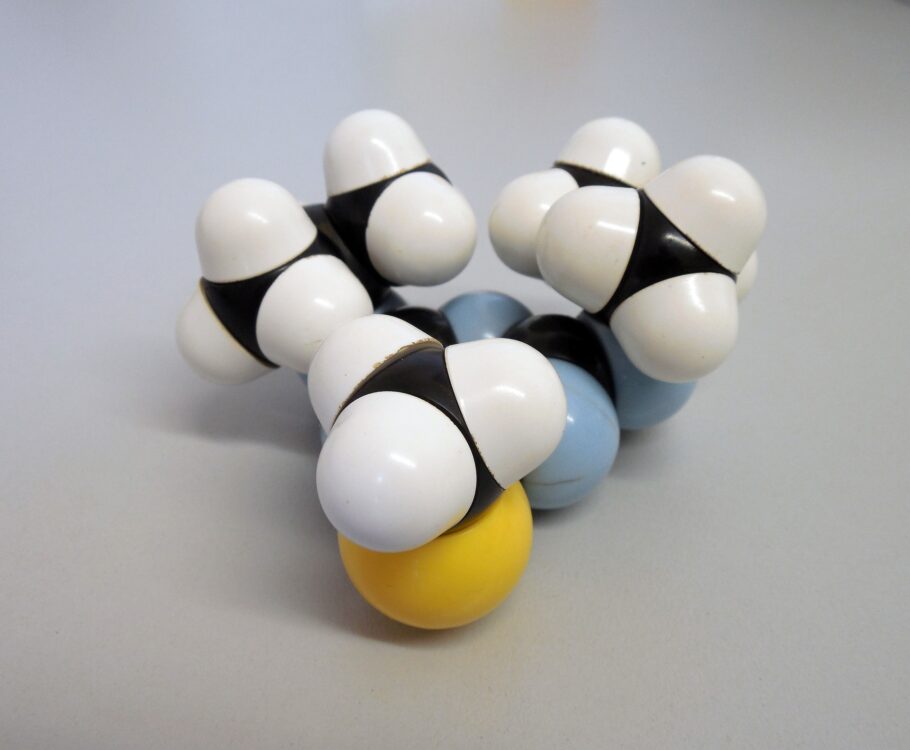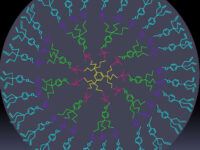Developing and releasing a new drug is one of the most challenging tasks that pharmaceutical companies have. The main effect of this challenge is that about 97 percent of new drug projects fail and never reach the market, resulting in a lack of clinical efficacy. Molecular modeling, however, has proven to be a valuable asset in drug discovery, leading to much more efficient drug discovery processes.
Molecular modeling technology necessitates that researchers have the ability to identify and create models of biomolecules. The structure of macromolecules such as proteins and nucleic acids are determined using several methods. One method is X-ray crystallography, which has a downside of requiring the macromolecule to be in crystal form. A second is nuclear magnetic resonance (NMR) which shows the structure of a macromolecule in a solution but has a downside of being limited to small molecules under 20 kilodaltons in molecular weight. A third is X-ray powder diffraction, which is based on constructive interference of monochromatic X-rays, and also has the advantage of not requiring the molecule to be in crystal form. After some post-processing such as filling in missing residues, the 3D digital structures can be used in simulations to portray reactions and interactions between molecules.
In order to accurately simulate the forces of movement and the space between molecules, models such as simple springs and sinusoidal functions are used for chemical bonds and atomic angles.
The challenges that scientists face when modeling biological systems include the sheer size of the systems and the vast amount of chemical and physical properties involved in molecular interactions, including the effects of polarization and the role of the electromagnetic field. In order to accurately simulate the forces of movement and the space between molecules, models such as simple springs and sinusoidal functions are used for chemical bonds and atomic angles. According to researcher Dr. Maral Aminpour and colleagues from the University of Alberta, successful simulations have been performed for entire viral capsids of viruses such as satellite tobacco mosaic and HIV-1. Currently, molecular modeling can simulate 100 million atoms for the cytoplasm of a bacterial cell.
Molecular modeling plays a vital role in drug discovery through computer-aided drug design (CADD). When creating a new drug to treat any disease, the first steps are target discovery and lead optimization. This process involves finding a biomolecule that could interact with the body to stop the malignant pathogens. Then, pre-clinical in vitro and in vivo testing is used, which involves testing the new drugs on living organisms to identify the most effective biomolecule for disease treatment. This drug also cannot have any severe repercussions on the organism.
Molecular modeling plays a vital role in drug discovery through computer-aided drug design (CADD).
However, before testing on live organisms, in silico testing is performed with CADD, which involves the utilization of computer simulations which drastically reduces the time and money spent on the development of the drug. There are two main methods of CADD: ligand-based (LB) and structure-based (SB). The main benefit of the LB method is that it can be used even if the structure of the target has not been determined. This method uses quantitative structure-activity relationship (QSAR) modeling or pharmacore modeling, both of which determine a general model using the known molecular features necessary for the molecular recognition of a ligand by a biological macromolecule. The LB method uses ligands to screen the molecules to determine whether or not they would have the desired effect against the target and to what extent. SB uses the structures of the biomolecules determined by X-ray diffraction, crystallography, or NMR to virtually screen a large molecular database for molecules that will bind to the target. This screening is done using geometry-based binding algorithms and shows which molecules will fit in the binding pocket of the protein associated with the disease. After the binding biomolecules are determined, computer programs are used to check the stability of the molecule and locate any non-active site mutations or interactions that could prevent the drug from working properly.
Molecular docking is also used to determine the preferred orientation of a ligand to a receptor or protein. In this orientation, the structure formed is stable and the two molecules are bonded. Screening and molecular docking was used by researchers Chen and colleagues from Xinjiang Medical University in drug research to identify and optimize squalene synthase (SQS) inhibitors to treat hyperlipidemia. SQS inhibitors slow down the effects of SQS, an enzyme involved in the cholesterol biosynthetic pathway. Chen describes that the process began by generating ten pharmacore models based on known SQS inhibitors, which were then used to screen potential SQS inhibitors from the Traditional Chinese Medicine Database. Then, molecular docking and molecular dynamic simulations were used to filter the results to find the molecules with proper binding stability and most effective orientation. The potential SQS inhibitors were selected based on the pharmacore models, docking score, and the interactions between them and SQS.
With its ability to minimize cost and time in the creation of entirely new biomolecules and optimization of new drugs, molecular modeling has the power to completely transform drug discovery and design.
Aside from increasing the efficacy of screening and the discovery of potential biomolecules, CADD can also aid in drug discovery using the de novo ligand design method. Through this process, a new drug is created by adding atoms to a core structure of a ligand molecule using the Biochemical and Organic Model Builder program. This program has already been used to design inhibitors for E. coli RNA polymerase.
With its ability to minimize cost and time in the creation of entirely new biomolecules and optimization of new drugs, molecular modeling has the power to completely transform drug discovery and design. As computational power continues to increase, molecular modeling will have the ability to simulate much larger biological systems, such as multi-domain proteins, for more significant timeframes.
Molecules (2019). DOI: 10.3390/molecules24091693
Molecules (2019). DOI: 10.3390/molecules24020321
Molecules (2018). DOI: 10.3390/molecules23051040
Journal of Computer-Aided Molecular Design (2012). DOI: 10.1007/s10822-011-9517-y
Image source: Pixabay.


